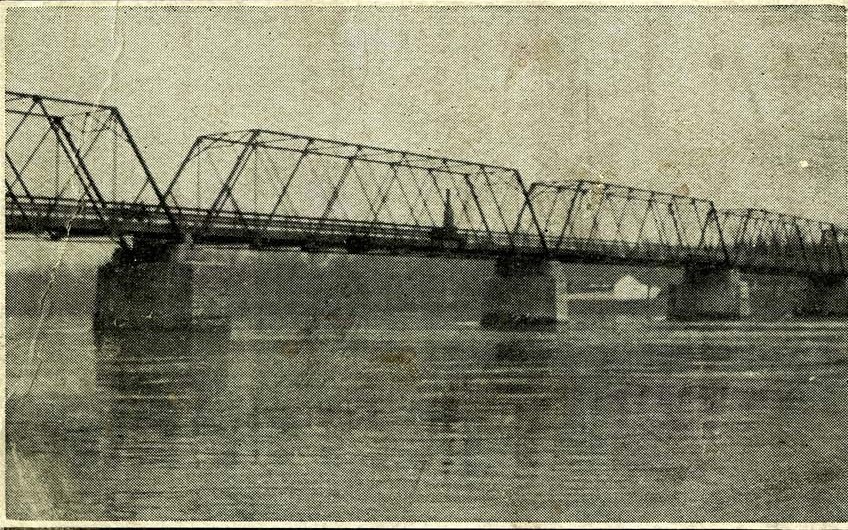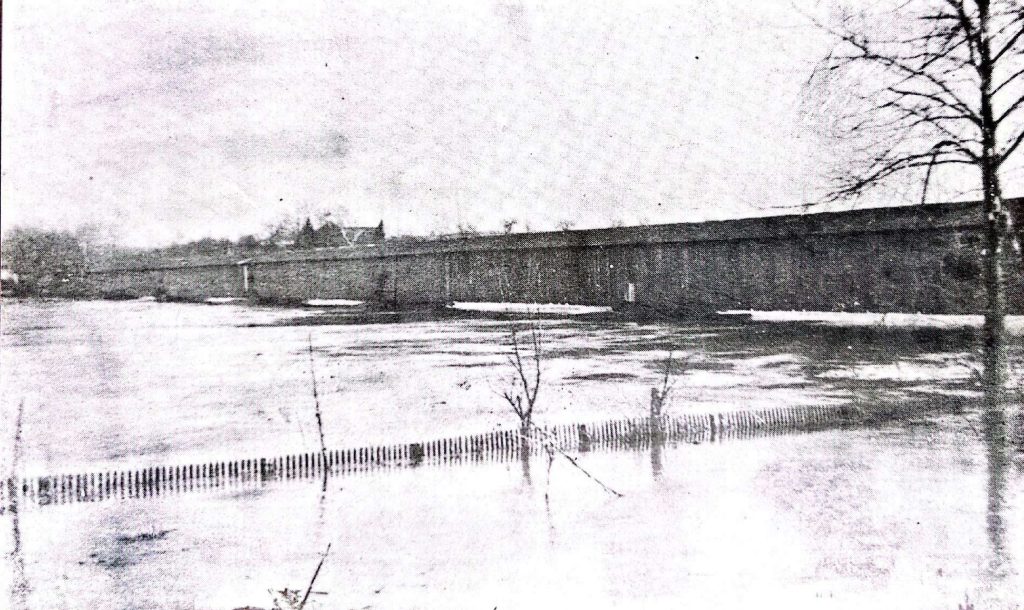
Washington Crossing Bridge repairs draw concerns over safety and history
| August 12, 2024
Plans to repair the more-than-a-century-old Washington Crossing Bridge connecting New Jersey and Pennsylvania have stirred up community concerns about safety and historic preservation while the bridge’s operator contends with an outdated span sorely in need of an upgrade.
Local residents are speaking out after the operator, the Delaware River Joint Toll Bridge Commission, began considering what to do next with the bridge, which spans the Delaware River between Upper Makefield, Pa., and Hopewell Township, N.J.
The commission, which oversees 20 bridges that cross the Delaware, announced in January that it was seeking contractors to take the preliminary steps needed to consider replacing the nearly 120-year-old bridge.
The commission says the 877-foot-long bridge, which recorded 7,200 average crossings in 2023, is safe for vehicles under three tons but does not meet modern-day standards.
The bridge “has experienced structural deterioration and does not meet current design standards, which creates reliability and safety concerns,” the commission said.
Narrow lanes and close calls
The existing lanes make for a white-knuckle drive because they are narrow enough that drivers passing in opposite directions could reach out and high-five each other.
The width of the bridge has led to drivers to either pull in their sideview mirrors or risk hitting one on an iron support and losing it to the river, something that the commission says occurs “frequently” in what it called “a bane to generations of motorists.”
Public comments at the commission’s recent monthly meetings have been almost entirely focused on the future of the Washington Crossing Bridge, with sessions occasionally getting heated between members of the public and staff.
Part of the comments include accusations by the public that the commission has already decided that the bridge is to be replaced and that a replacement will cost $1 billion. (No decisions have been made about the future of the bridge and an engineering firm is exploring options.)
Joe Resta, executive director of the commission, has denied these claims.
“The false assertions are causing people — good people with investments in nearby homes — to be scared and suspicious,” Resta said. “Unfortunately, we live in a time where misinformation is rampant, where subject-matter experts’ studies and findings are dismissed in favor of uninformed opinion and where public sector employees are treated with scorn and viewed as corrupt.”
Engineers to assess bridge’s needs
The commission awarded HDR Engineering a 30-month contract worth up to $8 million to provide preliminary engineering as well as environmental services and an alternatives analysis.
The firm is to analyze the impact and cost of building a new bridge with 12-foot-wide travel lanes with four- to six-foot shoulders and a 10-foot-wide walking path. Lanes now in both directions are 7.5 feet wide, and a wooden walking path is 3 feet by 6 inches wide.
The commission also directed HDR to analyze six alternatives, including doing nothing.
“The language says ‘anticipates’ what a replacement bridge, if it were to be constructed, needs to be based on the standards for bridge design today,” said Joseph Donnelly, deputy executive director of communications for the commission, about the request for proposal calling for contractors. “It certainly doesn’t dismiss bridge replacement by any means. On the other hand, it lays out that other alternatives are to be examined.”

Opened in 1905
The Washington Crossing Bridge was built after the “Pumpkin Flood” of 1903 (believed to have gotten its name because it happened in October) destroyed a covered bridge that once stood there, according to Jeff Marshall, a preservation consultant for Upper Makefield.
That bridge was built by the New Jersey Bridge Company, opened in 1905 and privately operated as a toll bridge by the Taylorsville-Delaware Bridge Company until 1922, when it was purchased jointly by the states. In 1987, it was conveyed to the Delaware River Joint Toll Bridge Commission, according to the DRJTBC.
The current iron truss bridge was built using the covered bridge’s embankments and piers, which date to the 1830s. This limited the bridge’s size, leading to the extreme narrowness that drivers know today.
“I don’t want to say they were cheap, but they were concerned about the budget,” Marshall said of the Taylorsville-Delaware Bridge Company’s construction of the Washington Crossing Bridge. “They had to raise money, they had to get shareholders.”
“It was certainly not designed for today’s traffic,” Marshall added.

Questions of aesthetics and safety
The bridge has no relation to the two Washington Crossing Parks on either side of the river, except for its location.
Residents of the Washington Crossing village in Upper Makefield are concerned that a larger bridge would destroy the aesthetic of their neighborhood of cozy streets and a waterfront with buildings reminiscent of early America.
The village is home to some historic buildings that have been preserved by the township and the state.
“I don’t want anything to happen,” said Rick Speranza, vice president of the Newtown Historic Association and resident of Washington Crossing. “I want it to stay as it is for eternity. You get that first truck over the bridge and you’re going to ruin the quaintness.”
On the other side of the Delaware River, residents of Hopewell are more concerned about possible increased traffic. The bridge sits at an awkward intersection of NJ Route 29 and Mercer County Road 546.
“If they have a real full bridge that is not terrifying to cross, the traffic will really be a disaster,” said Courtney Peters-Manning, mayor of Hopewell. “We’ll all very concerned.”
Both governing bodies of Hopewell and Upper Makefield have passed resolutions expressing their concerns about the bridge project.
The contract with the engineering firm has no provision to start construction and the commission has not finalized any decision about the future of the bridge. The engineering company’s analysis is expected to take more than three years and will include opportunities for the public to comment.








This Informative article is much appreciated .
I hope they will consider a single traffic span in the same location with one wider lane for vehicular traffic heading westbound towards PA on the southern/downriver side and a wider pedestrian/bike path on the upriver/northern side. The eastbound lane would be eliminated. This would eliminate the need for the current cantilevered pedestrian walkway currently in place on the span. The relocation of the pedestrians would eliminate the need for the majority of pedestrians crossing the county roads and interrupting traffic flow on both sides of the span. It also is the view that has more interest. East bound travelers to NJ could divert to Rte 295/Scudder Falls Bridge for a toll free passage. (This is not unlike the traffic pattern currently in place in Lambertville-New Hope during renovations on their bridge. )
It Certainly appears that nothing is going to Be Decided on for at least 3 years, and I Certainly HOPE that Whatever’s Done will just be the Required Maintenance because I doubt that Anybody wants a bigger Bridge.
I would like the current bridge converted to a single lane NJ to PA shared with a wider pedestrian/bike lane on the upriver side.
1. Pedestrians and bikers would no longer have to cross the road to access the bridge by Washington Crossing Historic Park which is a traffic issue and would have access to the better historic views.
2. The single westbound lane would eliminate need for major configuration of approaches while eliminating problems of tight curves and small lanes. It would also maintain a toll free option for locals who sometimes must traverse the river multiple times daily.
The vehicle return trip (PA to Nj) could be accommodated toll-free by having motorists access the Scudder Falls Bridge (Rte 295) from Taylorsville Rd.
I would also mention that the timetable is of great significance. 2026 is the 250th anniversary of THE Washington Crossing of the Delaware. The parks on both sides of the river will see an uptick in visitors. It is NOT the time to do anything that will interfere with the year long celebrations.
We were just on it recently. Why have the traffic lights at both sides Green? Should be only one lane use at a time. Other bridges of like use red/green traffic lights for safety. CRAZY!